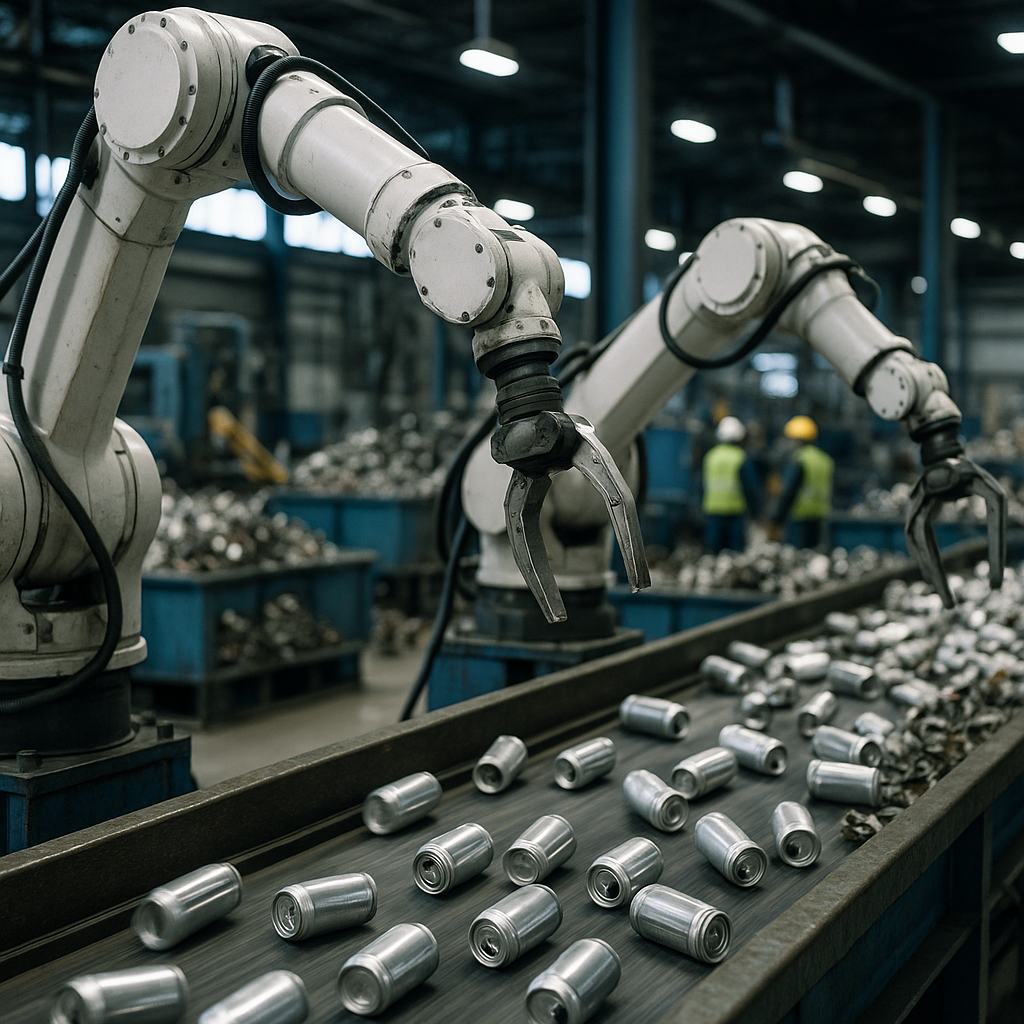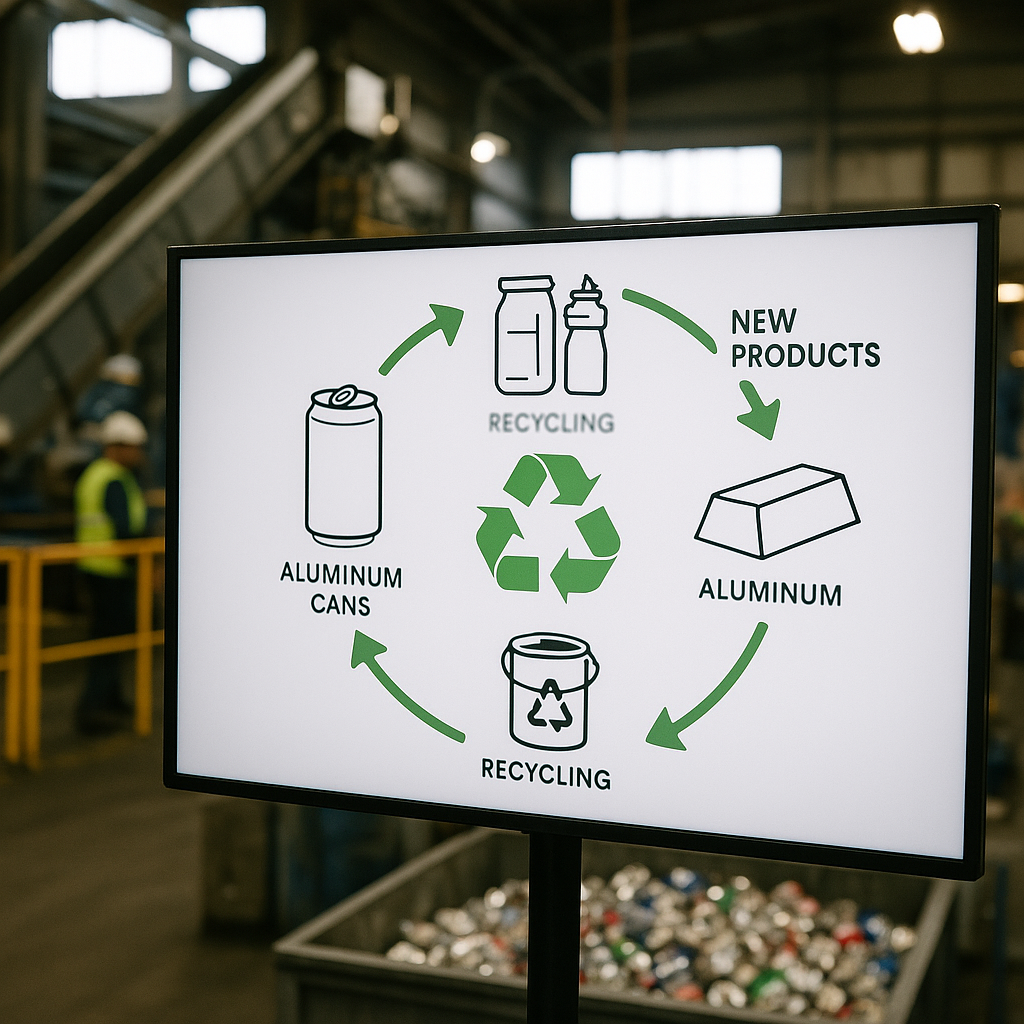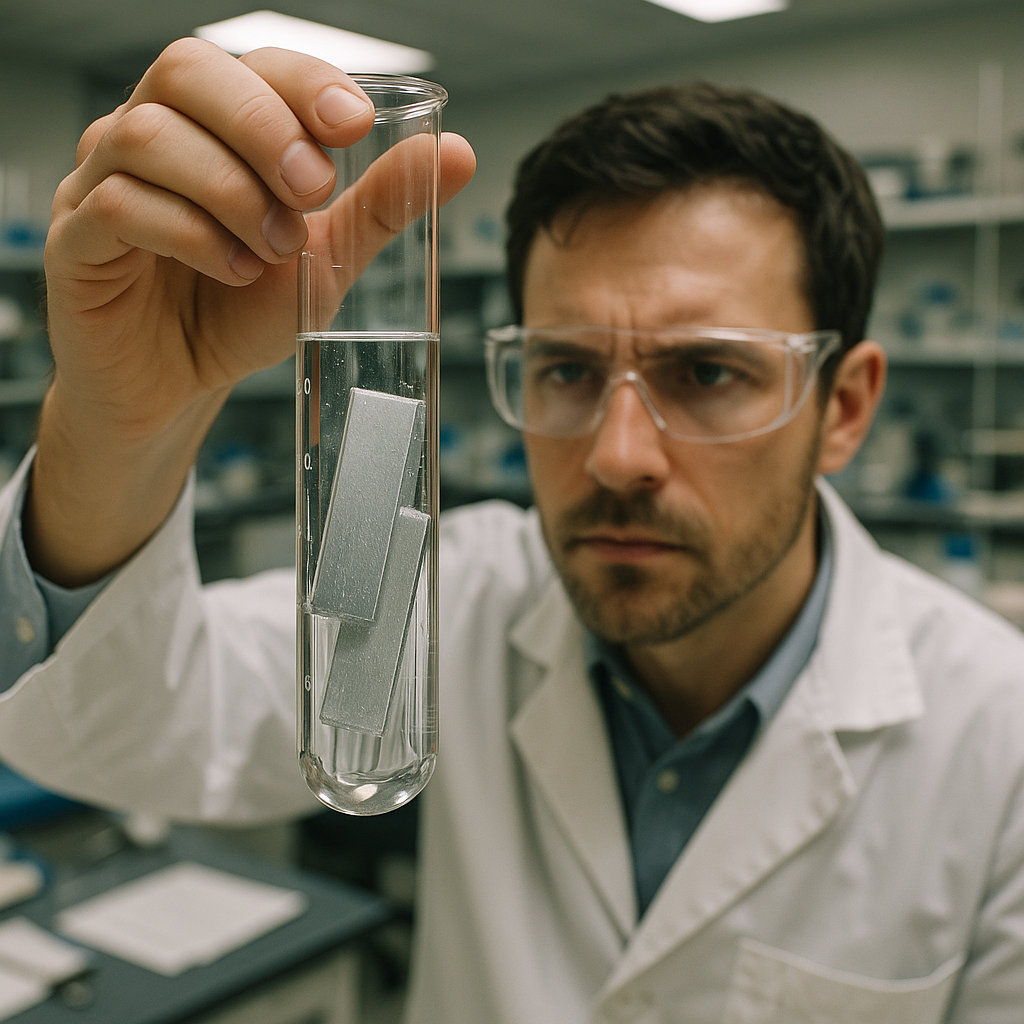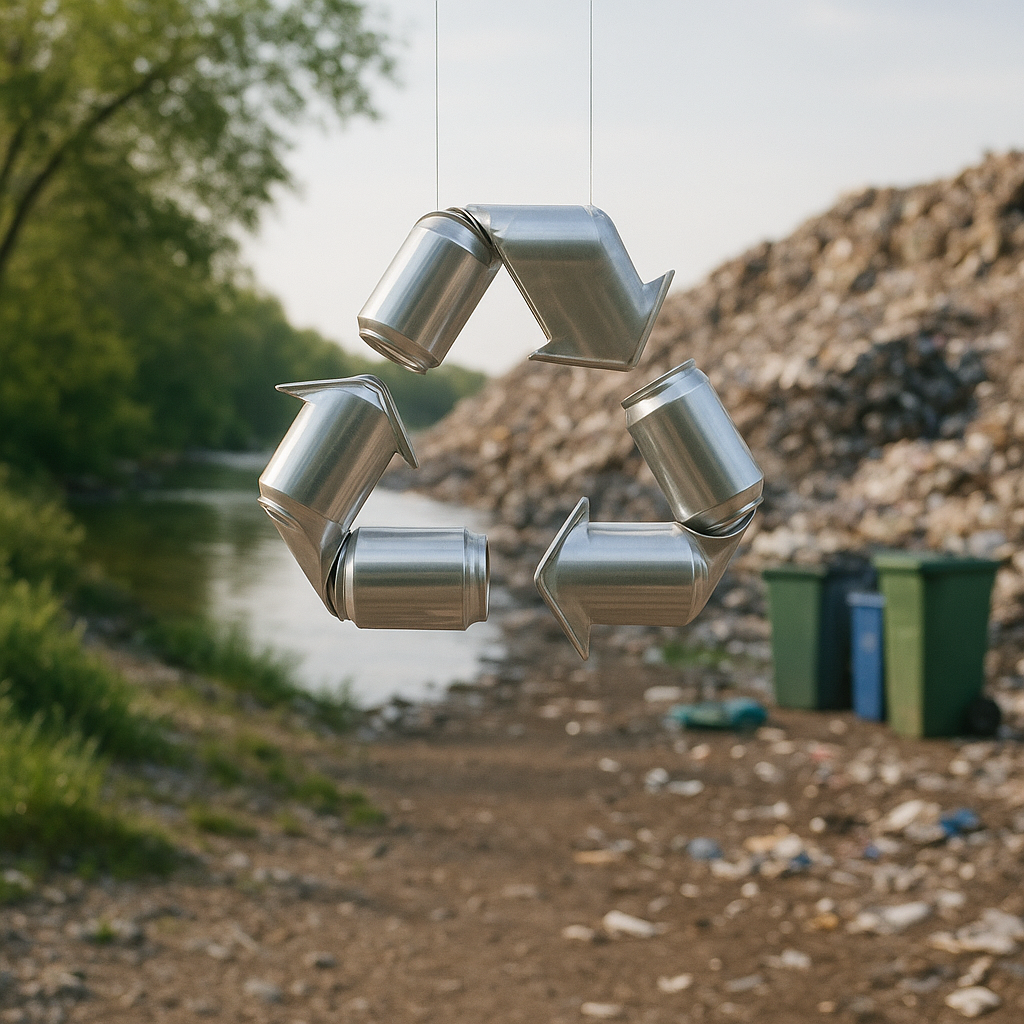5901 Botham Jean Blvd, Dallas, TX 75215
What are the Latest Advanced Aluminum Recycling Techniques in the United States?
June 7, 2025The aluminum recycling landscape in the United States is experiencing a technological transformation. Innovative sorting and processing methods are turning what was once considered waste into valuable resources. These breakthroughs are not just minor improvements—they represent significant changes in how the industry tackles recycling challenges.
Leading this transformation are technologies like X-ray transmission (XRT) and laser-induced breakdown spectroscopy (LIBS). These advanced systems can identify and sort different aluminum alloys with remarkable precision. Major industry players like Hydro and PADNOS have formed a joint venture called Alusort LLC to commercialize HySort technology, which delves deeper into scrap piles to recover aluminum that would otherwise end up in landfills.
The impact goes beyond environmental benefits. These technologies enable the production of high-quality, low-carbon recycled aluminum that meets stringent industry standards. With aluminum being infinitely recyclable without losing its properties, these advancements position the United States as a leader in sustainable materials recovery and circular economy initiatives.
How are Automated Systems Revolutionizing Aluminum Recycling?

Robotic arms equipped with vision systems and artificial intelligence are transforming aluminum recycling. These advanced machines can identify and sort aluminum scrap with remarkable precision. Unlike human sorters who may tire or miss small details, these AI-powered systems maintain consistent accuracy throughout continuous operation.
The impact on processing speed is substantial. Modern automated systems can sort up to 10 tons of aluminum scrap per hour, a four-fold increase compared to traditional manual sorting methods. Facilities using these technologies report operational cost reductions of approximately 25% while improving material recovery rates.
The technology functions like a sophisticated version of facial recognition. The AI systems learn to distinguish between different aluminum alloys by analyzing visual cues, density measurements, and molecular composition data. This growing intelligence allows recyclers to produce higher quality secondary materials with fewer impurities.
Precision Sorting Creates Higher Value Materials
The precision of automated sorting systems results in cleaner material streams. Robotic sorters can differentiate between various aluminum alloys with up to 95% accuracy. This level of precision was unattainable with previous manual methods, which typically achieved only 60-70% accuracy rates.
X-ray transmission technology and laser-induced breakdown spectroscopy enable recycling facilities to separate aluminum by specific alloy types. This creates more valuable end products that meet stringent manufacturing specifications. A single robot can replace multiple manual sorters while maintaining higher quality standards.
The reduction in contamination means recycled aluminum can more readily maintain its material properties through multiple recycling loops. This advances the circular economy model by keeping high-quality materials in productive use for longer periods.
Streamlined Processing Through Automation
Automated shredders and processing lines have significantly improved throughput capacity. These systems handle large volumes of scrap aluminum with minimal human intervention. The equipment produces uniform pieces that are ideal for subsequent melting and refining stages.
Think of these automated systems as industrial-scale food processors. They transform irregular aluminum scrap into consistently sized pieces that melt more efficiently. This standardization reduces energy consumption during remelting by up to 15% according to industry data.
Automated processing lines also incorporate sophisticated monitoring systems. Sensors continuously track material flow, equipment performance, and quality metrics. This data-driven approach allows facility operators to identify bottlenecks and optimize the entire recycling operation in real-time.
The integration of complete automated systems—from initial sorting to final processing—creates significant operational advantages. Facilities can process materials around the clock with reduced labor costs while producing higher quality recycled aluminum.
| Technology | Accuracy (%) | Processing Speed (tons/hour) | Energy Consumption (kWh/ton) | Cost Effectiveness |
|---|---|---|---|---|
| Manual Sorting | 50-60 | 1-2 | 0.5 | Low |
| Eddy Current Separator | 70-80 | 3-5 | 1.0 | Medium |
| X-ray Transmission (XRT) | 85-90 | 4-6 | 1.2 | High |
| Laser-Induced Breakdown Spectroscopy (LIBS) | 90-95 | 5-7 | 1.5 | High |
| Automated Robotic Sorting | 95-98 | 7-10 | 1.8 | High |
The economic benefits extend beyond immediate operational savings. By producing higher quality recycled aluminum, facilities can access premium markets and command better prices for their materials. The investment in automation typically shows returns within 2-3 years while positioning recyclers for long-term success in an increasingly competitive market.
What Role Does Closed-Loop Recycling Play in Advanced Aluminum Recovery?

Closed-loop recycling is a cornerstone of sustainable practices in the US aluminum industry. This system enables aluminum scrap to be recycled into new products without degrading material properties. Unlike traditional models, closed-loop systems maintain specific alloy compositions throughout the process, preserving the metal’s value and performance.
The automotive industry is a leading adopter of closed-loop aluminum recycling. Manufacturers use these systems to process production scrap and end-of-life vehicles. In a typical automotive stamping process, 30-40% of an aluminum coil becomes scrap that can be immediately recycled back into the same product line.
Environmental Benefits of Closed-Loop Aluminum Recycling
The environmental advantages are substantial and quantifiable. Recycled aluminum consumes about 95% less energy compared to primary production from bauxite ore, resulting in a similar reduction in carbon emissions. This makes it a powerful tool for automakers pursuing sustainability targets.
Closed-loop recycling significantly reduces landfill waste while preserving natural resources. Aluminum can be recycled infinitely without losing its material properties, creating a truly circular material economy.
Economic Advantages for Manufacturers
Beyond environmental benefits, closed-loop aluminum recycling offers compelling economic advantages. Automakers partnering with aluminum suppliers in closed-loop programs see reduced total vehicle costs and strengthened supply chain resilience. These systems are less vulnerable to market disruptions due to reduced reliance on raw material inputs.
The economic case is even stronger when considering aluminum’s lightweight properties in electric vehicles. Recycled aluminum helps maximize sustainability while enhancing EV efficiency and battery range.
Success Stories in Automotive Implementation
Several major automotive manufacturers have successfully implemented closed-loop aluminum recycling systems. In North America, one partnership recycles enough aluminum scrap from stamping processes to produce approximately 37,000 new vehicle bodies monthly, representing one of the largest closed-loop systems in the industry.
European manufacturers have also embraced closed-loop recycling. Novelis collaborated with partners to establish the first regional closed-loop system in Europe, featuring a dedicated railway service transporting materials across the continent.
Nissan has implemented a closed-loop aluminum recycling system for manufacturing the Nissan Rogue, where aluminum coils arrive at production facilities and scrap is repurposed into new components.
BMW uses recycled aluminum in its i3 electric vehicles, while Ford has developed comprehensive recycling programs for both vehicle components and batteries.
| Process | Energy Consumption (kWh/ton) | CO2 Emissions (tons/ton) | Reduction in Carbon Footprint (%) |
|---|---|---|---|
| Primary Aluminum Production | 14000-16000 | 10-12 | – |
| Aluminum Recycling (Conventional) | 700-800 | 0.5-1.0 | 90-95 |
| Aluminum Recycling (Low-Carbon) | 500-600 | 0.3-0.5 | 95-97 |
As automotive manufacturers pursue ambitious sustainability targets, closed-loop aluminum recycling will play an increasingly vital role. These systems preserve material value, reduce environmental impact, strengthen supply chains, and deliver economic benefits—making them essential to the future of sustainable mobility and advanced material recovery.
How are Chemical Processes Enhancing Aluminum Recycling Efficiency?

The aluminum recycling industry is experiencing transformative chemical advancements. Innovative processes are revolutionizing how we recover and reuse this valuable metal, reducing energy consumption, cutting emissions, and enhancing the quality of recycled aluminum.
Chemical innovations are addressing major challenges in the aluminum recycling chain. Traditional methods require significant energy and often produce unwanted emissions, struggling with mixed alloys and contaminants. New chemical approaches tackle these problems directly.
Inert Anode Technology: A Breakthrough in Smelting
Inert anode technology represents a significant advancement in aluminum recycling. Unlike traditional carbon anodes that emit carbon dioxide during smelting, inert anodes are made from non-consumable materials like ceramics, fundamentally shifting the chemical reaction.
The benefits are substantial. Inert anodes eliminate direct greenhouse gas emissions from the smelting process, generating oxygen instead of carbon dioxide. This technology can reduce the carbon footprint of aluminum processing by up to 90%.
A ton of recycled aluminum using inert anode technology produces only about 1,500 kg of CO₂ compared to 8,000 kg from traditional primary production methods. Companies like Alcoa and Rio Tinto are pioneering this approach through their joint venture, Elysis.
Plasma Smelting: High-Temperature Precision
Plasma smelting is another chemical innovation transforming aluminum recycling. This technique uses high-temperature plasma arcs to melt aluminum scrap quickly and efficiently, creating a controlled environment for processing complex or contaminated materials.
The plasma process excels when handling mixed alloys and materials that traditional methods struggle with, achieving separation rates previously thought impossible. The precise control also helps maintain the quality of the recycled aluminum, making it suitable for demanding applications like aerospace components.
Beyond improved quality, plasma smelting offers energy advantages. The concentrated heat means less energy waste compared to conventional furnaces, particularly valuable for processing complex scrap from electronics and automotive sources.
Green Chemistry Applications
The principles of green chemistry are driving more sustainable approaches to aluminum recycling, including developing environmentally friendly fluxes and non-toxic methods for treating aluminum byproducts.
Fluxes are substances added during smelting to remove impurities and improve metal quality. Traditional fluxes often contain harmful chemicals. New green alternatives are less toxic and more biodegradable, reducing their environmental impact while maintaining effectiveness.
Aluminum dross, a byproduct of smelting, presents another challenge. Conventional treatment methods often use toxic chemicals. Researchers are now developing greener alternatives using non-toxic reagents or biological processes to recover aluminum from dross, minimizing hazardous waste and improving resource recovery.
The application of ionic liquids as solvents in aluminum processing shows particular promise. These specialized chemical compounds can operate at lower temperatures than traditional methods, reducing energy requirements and hazardous emissions while enabling more precise separation of aluminum from other materials.
Closed-Loop Chemical Recycling
Closed-loop recycling systems represent the future of aluminum recovery, enabling the recycling of aluminum scrap into new products without quality loss. The chemical processes involved are carefully controlled to maintain alloy integrity throughout multiple recycling cycles.
The automotive industry demonstrates the effectiveness of closed-loop approaches. Scrap aluminum from production and end-of-life vehicles is collected, processed, and remanufactured into new components, with careful management of chemical composition ensuring the recycled aluminum meets demanding performance standards.
With global recycling rates reaching 76% and growing, these closed-loop systems deliver significant benefits. Recycling aluminum through such methods saves 95% of the energy required for primary production, translating to approximately 9 kilograms of CO₂ emissions saved per kilogram of recycled aluminum.
Future Chemical Innovations
The chemical transformation of aluminum recycling continues to advance. Researchers are exploring techniques like electromagnetic stirring to homogenize alloy composition during melting, improving quality and removing impurities without additional chemical additives.
Multi-stage chemical separation systems combine different technologies to achieve higher purity levels, using a sequence of chemical processes to handle increasingly complex scrap materials.
Hydrogen fuel integration and direct strip casting represent promising frontiers for further reducing carbon emissions. These chemical and thermodynamic improvements will continue to push aluminum recycling toward greater sustainability and efficiency.
What are the Environmental Impacts of Advanced Aluminum Recycling in the US?

Advanced aluminum recycling techniques in the US are significantly benefiting the environment. These innovations are enhancing the sustainability of an industry once known for its resource demands and emissions.
A key benefit is the substantial energy savings achieved through recycling. Recycling aluminum saves up to 95% of the energy needed for primary production from raw bauxite ore, equating to about 14,000 kWh per ton. Recycling just one aluminum can saves enough energy to power a television for three hours.
These energy savings lead to significant reductions in greenhouse gas emissions. Recycling one ton of aluminum avoids approximately 9 tons of carbon dioxide emissions. Life cycle analyses consistently show that recycled aluminum has a lower environmental footprint than primary aluminum in several impact categories.
Reducing Carbon Emissions
The carbon footprint reduction from advanced aluminum recycling is substantial. Traditional primary aluminum production generates 10-12 tons of CO₂ emissions per ton, whereas recycling produces only 0.5-1 ton of CO₂ per ton of recycled material.
This reduction is crucial as industries aim to lower their carbon impact. The automotive sector, for instance, uses recycled aluminum to produce lighter, more fuel-efficient vehicles. Ford Motor Company has implemented a closed-loop recycling system for manufacturing scrap aluminum, returning it as new sheet metal.
Innovations in sorting technology, like X-ray transmission and laser-induced breakdown spectroscopy, have improved recycling’s carbon efficiency by enabling precise separation of aluminum alloys, reducing contamination, and enhancing recycled aluminum quality.
Resource Conservation Benefits
Advanced aluminum recycling significantly contributes to resource conservation. Extracting aluminum from bauxite ore generates substantial waste, particularly bauxite residue known as “red mud,” which poses environmental risks if not managed properly.
Recycling aluminum has dramatically reduced the need for bauxite mining and the generation of red mud. Recycling one ton of aluminum conserves about 4 tons of bauxite and reduces water usage by 90-95% compared to primary production.
The circular nature of aluminum recycling is notable. Unlike many materials that degrade during recycling, aluminum can be recycled indefinitely without losing quality. This makes it ideal for closed-loop systems where products are recycled directly back into the same type of product. About 75% of all aluminum ever produced is still in use today, highlighting its durability and recyclability.
Waste Reduction Effects
Advanced recycling techniques have greatly improved waste management in the aluminum industry. Modern facilities use sophisticated systems to process large volumes of aluminum scrap with minimal material loss. These technologies include automated processing lines that enhance efficiency and reduce secondary waste generation.
The beverage can industry illustrates the potential of aluminum recycling for waste reduction. Although recycling rates for aluminum cans have fallen below 50% in recent years, increasing these rates could lead to substantial environmental benefits. According to the Aluminum Association, the US economy could save over $1 billion annually by recycling all aluminum beverage cans rather than landfilling them.
Automated and robotic systems with vision and artificial intelligence can now precisely identify and sort aluminum scrap, recognizing specific shapes, colors, and textures, efficiently separating aluminum from other materials and minimizing waste generation.
The environmental benefits of aluminum recycling extend beyond waste reduction to preserving landfill space and reducing litter. Aluminum’s high value in recycling streams supports municipal recycling programs financially, effectively subsidizing the recycling of less valuable materials.
Conclusion: The Future of Advanced Aluminum Recycling in the United States
Advanced aluminum recycling technologies are reshaping the U.S. recycling landscape, offering promising benefits for sustainability and resource conservation. Automated sorting systems using X-ray transmission and laser-induced breakdown spectroscopy now enable precise identification of various aluminum alloys, significantly enhancing recycling efficiency. These technologies, in conjunction with robotic systems and AI algorithms, have transformed the industry’s ability to process complex scrap streams with minimal material loss.
The move toward closed-loop recycling systems marks another important step in aluminum sustainability. These systems allow aluminum to be recycled indefinitely without losing quality, reducing the environmental impact of primary production. Recycled aluminum requires only 5% of the energy used for primary production and prevents approximately 9 tons of CO2 emissions per ton recycled, providing substantial environmental benefits across the American industrial landscape.
For sustainable waste management solutions that align with these advanced recycling methods, contact Okon Recycling at 214-717-4083.
